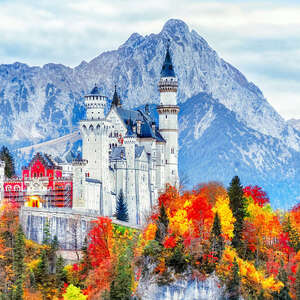How to see shooting stars when the Lyrid meteor shower peaks this weekAndrea Smith
A special celestial event that causes shooting stars is taking place this week, with peak activity expected on Thursday night and Friday morning.
The Lyrid is one of the year’s oldest known meteor showers, having first delighted stargazers about 2,700 years year ago, according to NASA.
They first became active this year on April 14 but will reach their peak tonight and into the early hours of Friday morning, when people may observe up to 20 meteor showers shooting across the night sky each hour.
These are 5 of the world’s best places for stargazing
The Lyrids seen over Burg auf Fehmarn, Germany © Daniel Reinhardt/Picture Alliance via Getty Images
What is the Lyrid meteor shower?
The Lyrid meteor shower generally lasts from 16 to 25 April each year, and its peak is expected to occur this week in the early hours of April 22. It is one of the oldest meteor showers known to man and emanates from the lyre – a point in the constellation Lyra.
The meteors are dust particles ejected by Comet Thatcher, an ancient comet first discovered in 1861 that orbits the sun once every 415 years. As the particles enter the Earth’s atmosphere, they shoot overhead at 30 miles per second and glow as they burn up.
This lesser-known US national park is the latest International Dark Sky destination
The Lyrid meteor shower seen over the ancient city of Aizanoi in Kutahya, Turkey © Fatma Selma Kocabas Aydin/Anadolu Agency/Getty Images
How can I observe the Lyrid meteor shower?
These shooting stars are normally best seen from a spot without light pollutions, such as a Dark Sky Reserve, but as it happens, there’s a bright, waning gibbous moon in the sky tonight so it could interfere with viewing conditions.
Observers in the Northern Hemisphere will see the most Lyrids, with the best time to watch between midnight and 2am, so you may wish to stay up late or get up early to catch this special celestial event. The good news is that the shooting stars can be seen with the naked eye, and as a bonus, you may also be able to spot one or two during the nights after.
It is anticipated that 10-20 moderately bright meteors will be visible per hour at the shower’s peak, although on various occasions in the past, the shower has produced hundreds of meteors.
You might also like:
Which US Dark Sky Park is right for you?
The best US national parks for stargazing, according to star map makers
The Pacific island of Niue is the first whole country to become a dark sky nation
The post How to see shooting stars when the Lyrid meteor shower peaks this week
appeared first on Lonely Planet Travel News.











